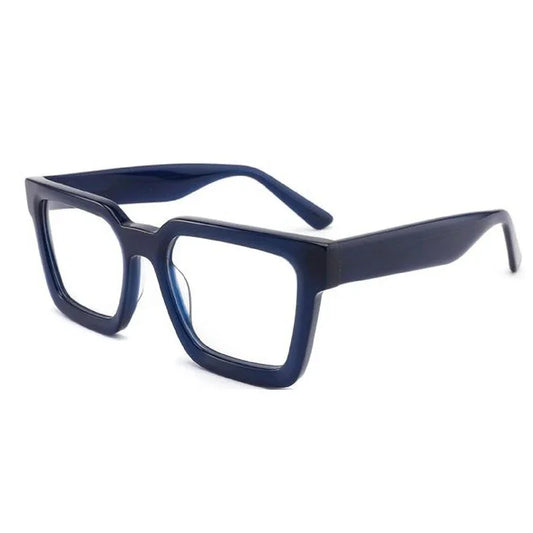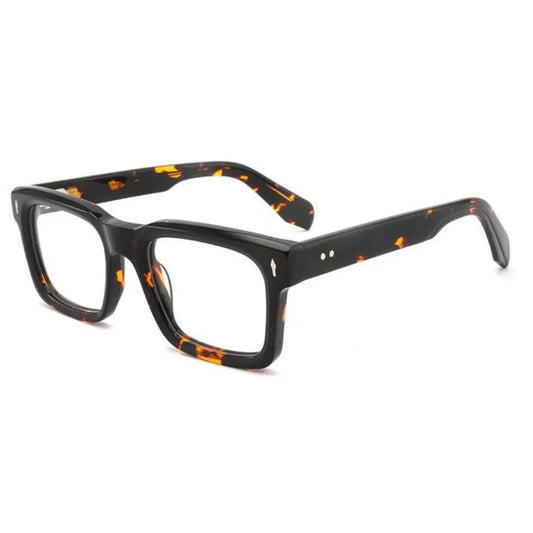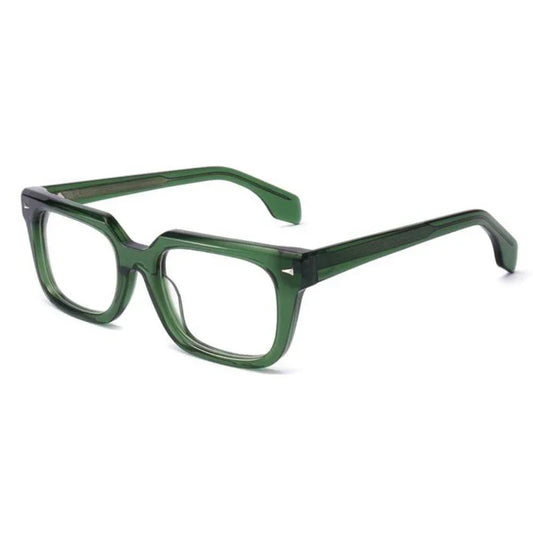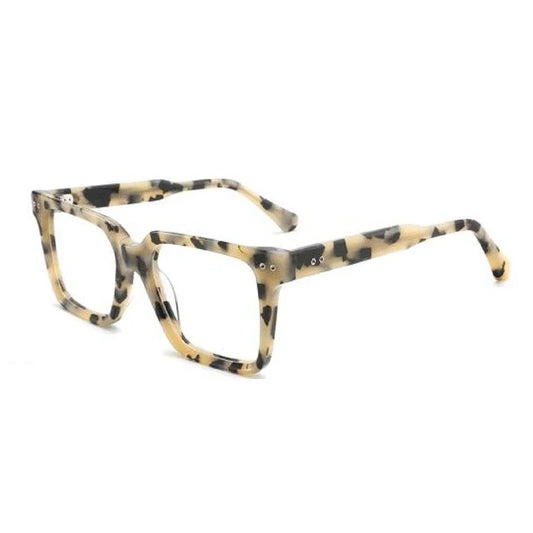
Parts of Reading Glasses: Complete Breakdown Guide
Did you know that over 60 percent of adults over age 40 rely on reading glasses for daily tasks? Clear vision is more than a luxury when small print and digital screens fill our world. Knowing what makes up a great pair of reading glasses can help you enjoy sharper focus, lasting comfort, and style that fits your personality. Smart choices start with understanding frames, lenses, and those subtle features that make all the difference.
Table of Contents
- Core Components Of Reading Glasses Explained
- Different Frame Styles And Materials
- Lens Types And Magnification Levels
- Functional Features: Hinges, Nose Pads, And Arms
- Choosing The Right Parts For Your Needs
Key Takeaways
| Point | Details |
|---|---|
| Frame Structure Matters | The frame of reading glasses affects style, fit, and overall comfort; materials like metal and plastic offer distinct advantages. |
| Lens Selection is Key | Understanding lens types and magnification levels ensures optimal visual correction tailored to individual reading needs. |
| Comfort Comes from Design | Features such as adjustable nose pads and ergonomic temples enhance comfort and stability for extended wear. |
| Consider Your Lifestyle | Choose reading glasses that reflect your personal style and accommodate your daily activities, focusing on durability and functionality. |
Core Components of Reading Glasses Explained
Reading glasses are precision instruments designed to help you see clearly while reading, and understanding their core components can dramatically improve your selection and wearing experience. Each part plays a critical role in providing comfort, functionality, and visual clarity.
Frame Structure
The frame serves as the fundamental foundation of reading glasses, holding all components together and determining both style and fit. Frames can be crafted from various materials like metal, plastic, or acetate, each offering unique characteristics. Understanding reading glasses frame shapes can help you choose the most suitable design for your face and lifestyle.
Essential Optical Elements
At the heart of reading glasses are the lenses, which provide precise magnification tailored to your specific reading needs. These corrective lenses are designed to help your eyes focus more easily on close-up text, reducing eye strain and fatigue. Lens materials and coatings can vary, offering additional benefits like anti-reflective properties or blue light protection.
Supporting Components
Several supporting elements ensure your reading glasses remain comfortable and functional:
- Nose Pads: Provide stability and distribute weight evenly across your nose
- Temples (Arms): Extend over your ears, keeping glasses securely in place
- Bridge: Connects the two lens rims and rests comfortably on your nose
These components work together to create a comfortable, personalized reading experience. For more insights into how reading glasses function, check out our comprehensive guide on the role of reading glasses.
Different Frame Styles and Materials
Choosing the right frame for your reading glasses is more than just a fashion statement - it’s about finding the perfect balance between comfort, functionality, and personal style. The world of reading glasses offers an exciting array of frame styles and materials designed to suit every face shape, lifestyle, and aesthetic preference.
Frame Styles
Reading glasses come in several distinctive frame styles, each offering unique visual and practical characteristics. Full-rim frames provide complete lens support and a classic look, while semi-rimless designs offer a lighter, more minimalist appearance. Rimless frames represent the ultimate in lightweight elegance, featuring lenses directly attached to the temples and bridge. Understanding reading glasses frame shapes can help you navigate these options more confidently.
Material Varieties
The material of your reading glasses significantly impacts their performance and durability. Metal frames like titanium and stainless steel offer exceptional strength and a sleek profile. They’re typically lightweight and corrosion-resistant. Plastic frames, including acetate and nylon, provide greater color variety and can be more flexible. These materials allow for bold, expressive designs and often come at a more affordable price point.
Here’s a comparison of popular frame materials for reading glasses:
| Material | Key Benefits | Common Styles |
|---|---|---|
| Metal | Lightweight Durable Rust-resistant |
Full-rim Semi-rimless |
| Plastic | Colour variety Flexible Affordable |
Full-rim |
| Acetate | Stylish Hypoallergenic Range of colours |
Full-rim |
| Titanium | Extremely light Strong Corrosion-resistant |
Full-rim Semi-rimless |
Choosing Your Perfect Frame
Consider these factors when selecting your ideal frame:
- Face Shape: Different frames complement various facial structures
- Lifestyle: Active users might prefer more durable materials
- Comfort: Weight and flexibility matter for extended wear
- Personal Style: Choose a design that reflects your personality
For a deeper understanding of how reading glasses can enhance your vision, explore our comprehensive guide on the role of reading glasses.
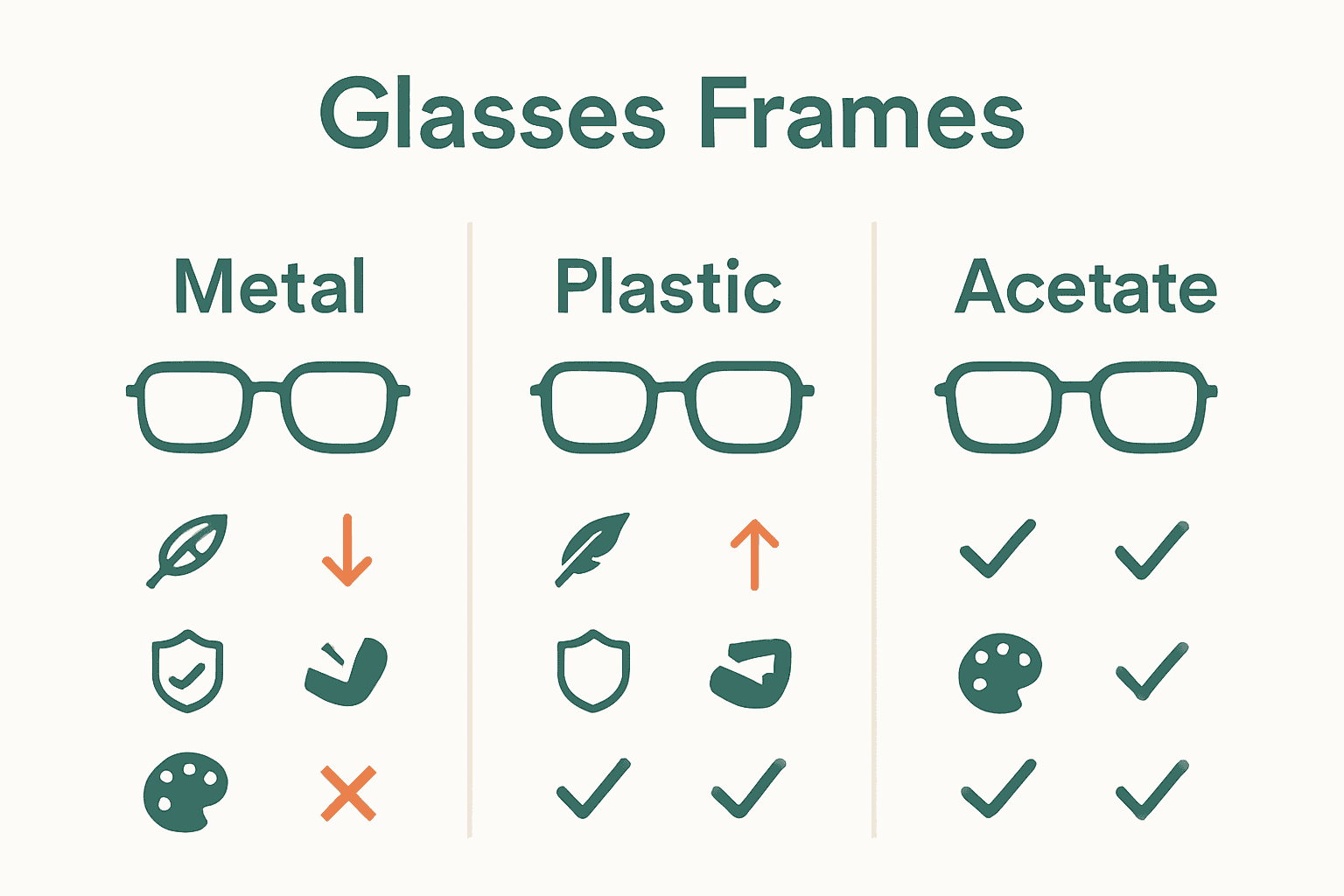

Lens Types and Magnification Levels
Navigating the world of reading glasses means understanding the intricate science behind lens types and magnification levels. These critical elements determine how effectively your glasses will help you read, work, and enjoy close-up activities without straining your eyes.
Understanding Lens Types
Single-vision lenses represent the most common type of reading glasses, providing uniform magnification across the entire lens. These lenses are ideal for people who need consistent close-up vision correction. Understanding lens types for reading glasses can help you make an informed choice about your visual needs.
Magnification Levels Explained
Magnification in reading glasses is measured in diopters, typically ranging from +1.00 to +3.50. This range corresponds to the increasing difficulty of focusing on close-up text as we age. The right magnification level depends on several factors:
- Age: Presbyopia progresses with time
- Reading Distance: How close you typically hold reading materials
- Visual Comfort: Reduced eye strain and fatigue
Choosing Your Ideal Magnification
Selecting the correct magnification isn’t a one-size-fits-all process. Most people start with lower magnifications like +1.00 or +1.50 and gradually increase as their near vision changes. Professional eye exams can help determine the most appropriate strength for your specific vision needs. A simple test involves holding reading material at a comfortable distance and selecting the lowest magnification that allows clear, comfortable reading.
Functional Features: Hinges, Nose Pads, and Arms
Reading glasses are more than just magnifying lenses - they’re carefully engineered accessories designed to provide comfort, stability, and long-lasting performance. The functional features like hinges, nose pads, and arms play a crucial role in determining how well your glasses fit and feel throughout the day.
Innovative Hinges
Spring hinges represent a game-changing innovation in reading glasses design. These flexible connections between the frame and temples allow the arms to bend outward without breaking, providing superior durability and a more adaptable fit. Some advanced models feature memory metal hinges that can return to their original shape after being bent, ensuring your glasses maintain their structural integrity over time.
Nose Pad Precision
Nose pads are the unsung heroes of comfortable eyewear. Adjustable silicone or rubber nose pads distribute the weight of your glasses evenly, preventing pressure points and slippage. Different styles accommodate various nose shapes:
- Push-in nose pads: Soft and moldable
- Screw-mounted pads: More precisely adjustable
- Integrated nose bridges: Seamless design for minimal contact
Temple Design and Functionality
The temples (or arms) of reading glasses do much more than just rest over your ears. Ergonomically designed temples with subtle curve and grip ensure your glasses stay securely in place during reading, writing, or any close-up task. Understanding reading glasses frame shapes can help you appreciate how these seemingly simple components contribute to overall comfort and functionality.
Choosing the Right Parts for Your Needs
Selecting the perfect reading glasses is a personal journey that goes beyond simple vision correction. It’s about finding a pair that seamlessly integrates with your lifestyle, personal style, and unique visual requirements. Understanding how each component contributes to your overall experience is key to making an informed decision.
Assessing Your Vision Needs
Your starting point should be a clear understanding of your visual challenges. Magnification levels are not universal - they’re as individual as your fingerprint. Most people begin with lower strengths like +1.00 or +1.50, gradually adjusting as their near vision changes. Understanding lens types for reading glasses can provide deeper insights into matching the right lens to your specific needs.
Comfort and Functionality Considerations
Beyond magnification, comfort is paramount. Consider these critical factors when selecting reading glasses:
- Frame Material: Lightweight metals or flexible plastics
- Nose Pad Design: Adjustable for personalized fit
- Hinge Flexibility: Spring or memory metal hinges
- Temple Shape: Ergonomic design for secure wear
Lifestyle and Personal Style Integration
Your reading glasses should be an extension of your personal style and daily activities. Active individuals might prioritize durability and flexible hinges, while those who switch between reading and distance viewing might consider more versatile frame designs. Professional environments might call for more understated styles, whereas creative spaces welcome more expressive eyewear choices.
Discover Reading Glasses That Fit Your Vision and Lifestyle
Understanding the intricate parts of reading glasses is the first step to finding the perfect pair that provides clear, comfortable vision. If you struggle with choosing the right magnification level, frame style, or want superior comfort with adjustable nose pads and flexible hinges you are not alone. At Ministry of Sight, we specialise in helping you navigate these choices with ease, offering a wide selection of stylish and functional options tailored to your needs.
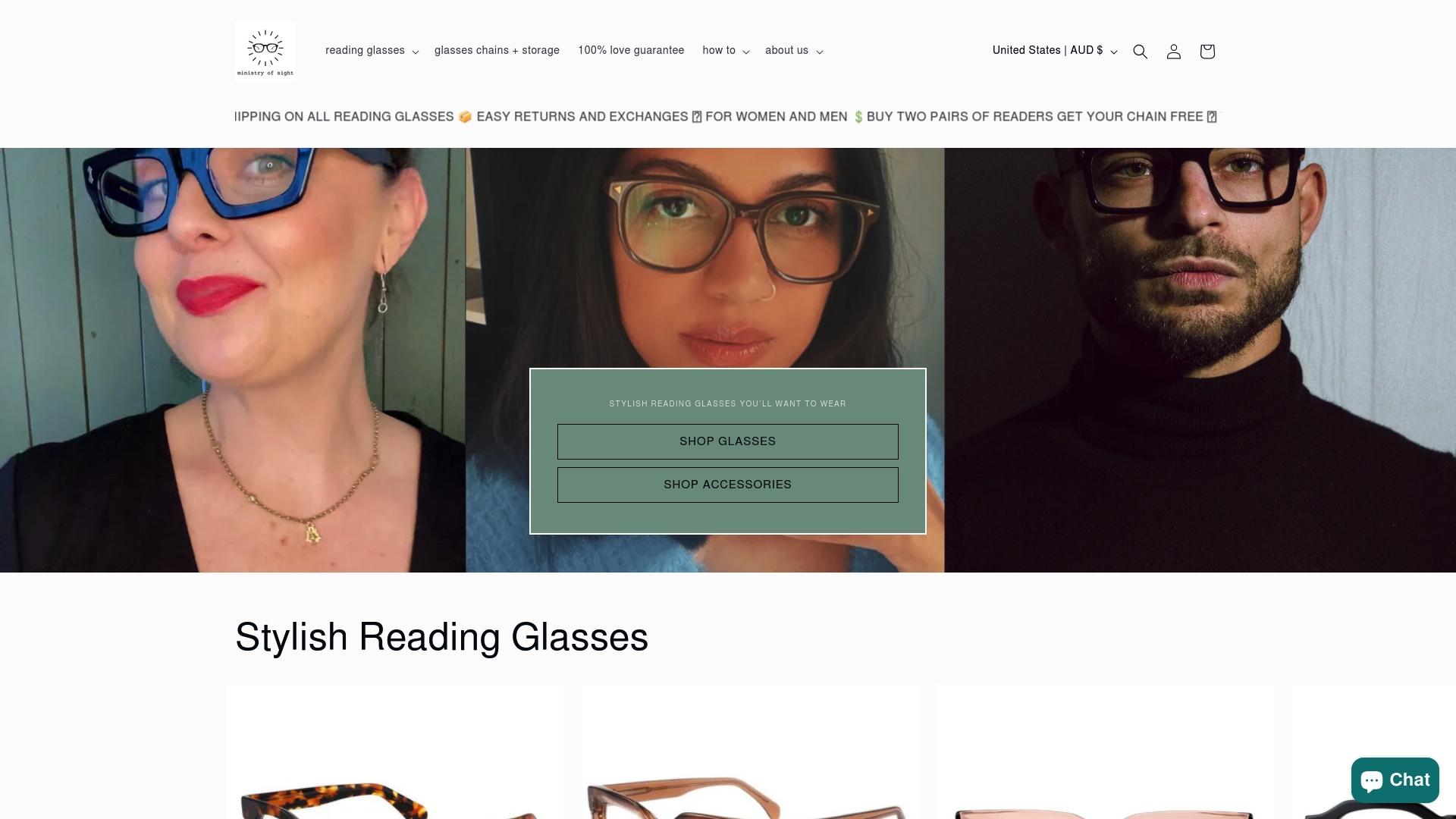
Explore our range of Stylish Reading Glasses for Men and Women including durable frames with ergonomic designs that ensure lasting comfort. Whether you prefer the sleek look of Rectangular Reading Glasses or want to take advantage of our limited-time Spring Sale, there has never been a better time to upgrade your eyewear. Visit Ministry of Sight today and secure eyewear that truly matches your vision and style needs. Step into clearer vision with confidence now.
Frequently Asked Questions
What are the main parts of reading glasses?
The main parts of reading glasses include the frame, lenses, nose pads, temples (arms), and the bridge. Each component plays a crucial role in providing comfort, fit, and visual clarity.
How do I choose the right magnification level for my reading glasses?
To choose the right magnification level, consider your age, how close you hold reading material, and your visual comfort needs. Most people start with lower magnifications and increase as their vision changes. A professional eye exam can help determine the best strength for you.
What materials are commonly used for reading glasses frames?
Common materials for reading glasses frames include metal (like titanium and stainless steel), plastic, acetate, and nylon. Each material offers different benefits in terms of durability, weight, and style.
What is the function of nose pads in reading glasses?
Nose pads provide stability and distribute the weight of the glasses evenly across your nose, enhancing comfort and preventing slippage during use. They can be adjustable for a personalized fit to accommodate various nose shapes.


